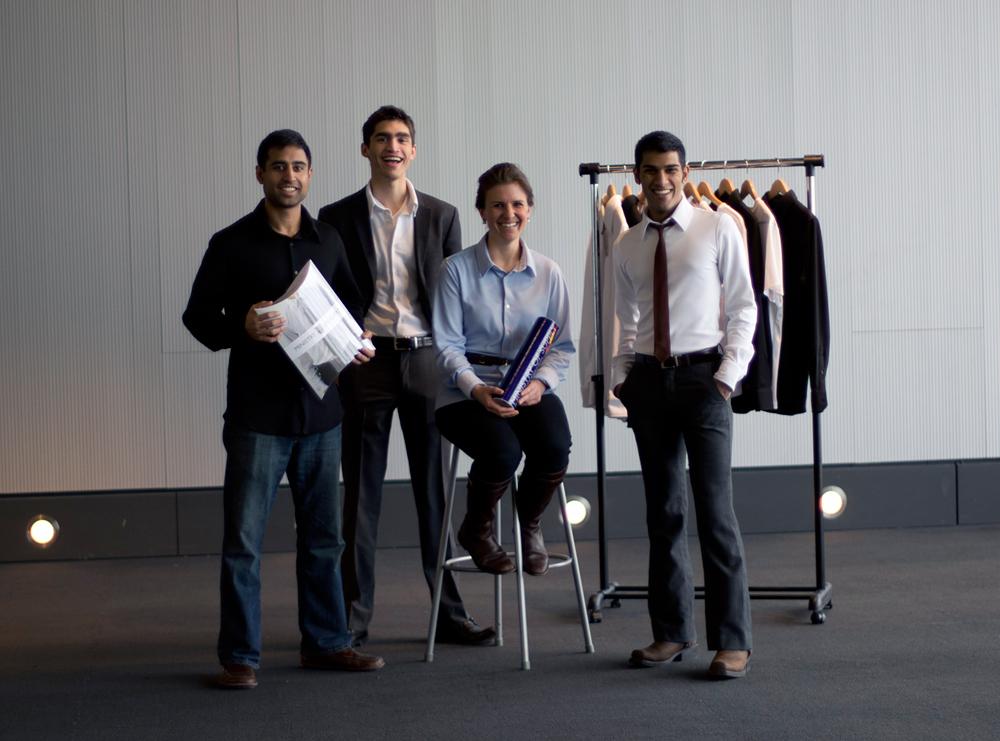TechnoLogical: When Under Armour meets Polo
 | TechnoLogical is a weekly blog focusing on new advances in science and technology and looking critically at how the technology we already use impacts our lives. Come back next Monday for the next edition of TechnoLogical. |
We're in that awkward mid-spring season right now, where the unpredictable weather inevitably causes us to wear sweaters when it is 80 degrees outside and shorts when there's frost on the ground. But thanks to recent developments by students at the Massachusetts Institute of Technology (MIT), all of that may change. Engineering student Gihan Amarasiriwardena was frustrated that stiff suit jackets didn't complement the sweaty and strenuous task of commuting by bike. He resolved to find a way to wear business clothing while keeping the body cool and active.
He first engineered high-tech clothing as a 14-year-old Boy Scout, when he designed a wind-blocking coat out of garbage bags, fleece and spray-on adhesive. He used this experience years later when he went on to invent technological clothing that uses NASA technology which adapts to heat and the environment.
Amarasiriwardena and his innovation partner Kevin Rustagi, teamed up with Kit Hickey and Aman Advani at MIT's entrepreneur sector after they founded The Ministry of Supply. The company designs a variety of formal, business clothing that incorporates sleek, form-fitting material where, as Inc. phrases it, "Under Armour meets Polo." The trendy clothing is suitable for the workplace on the outside while comfortable to the wearer on the inside.
Their clothing has several strategic features that are stitched inside formal, business clothing. The thermal analysis clothing, for example, uses the same fabric that NASA uses to protect astronauts in 200-degree heat changes. The material uses infrared thermal imaging to identify where heat is generated around the body. Different patches on the shirt adjust the temperature of the clothing to suit the body temperature, preventing the wearer from sweating or feeling cold.
Other styles embody complex aerospace engineering that customizes business clothing to make it less stiff and more flexible. Instead of using the conventional needle and thread to develop this futuristic clothing, the company uses "Robotic Engineered Knitting," "Thermolamination" and "Lastercutting" to create the clothing adaptable and precise.
The clothing is engineered to function just the way the skin does: providing protection as well as managing heat and moisture. The company is hoping to expand its clothing options so that someday, all clothing can customizable to the season and the individual's body. In the past year, the company sold 12,800 shirts and pants. One of its biggest consumers is Boston Red Sox Pitcher Craig Breslow, who recently invested $50,000 in the company for his teammates.
With growing interest in this new technology, having separate summer and winter wardrobes might just become a thing of the past.
Tags: Technology winter summer environment TechnoLogical body temperature boston red sox clothing Craig Breslow engineering furturistic Gihan Amarasiriwardena thermal
Aanchal Johri. Aanchal Johri ('14) served as co-Editor-in-Chief of Silver Chips Online with Jack Estrin from 2013-2014. In January 2014, Johri represented Silver Chips Online at the White House as the only high school journalist to <a href="http://silverchips.mbhs.edu/story/12356">cover</a> the White House State of Science, Technology, Engineering and … More »
Comments
No comments.
Please ensure that all comments are mature and responsible; they will go through moderation.
